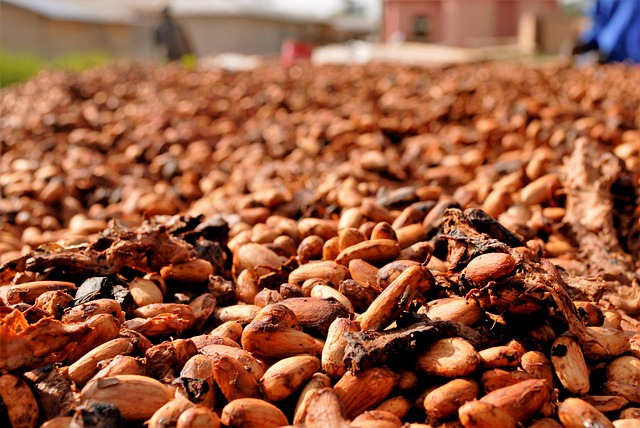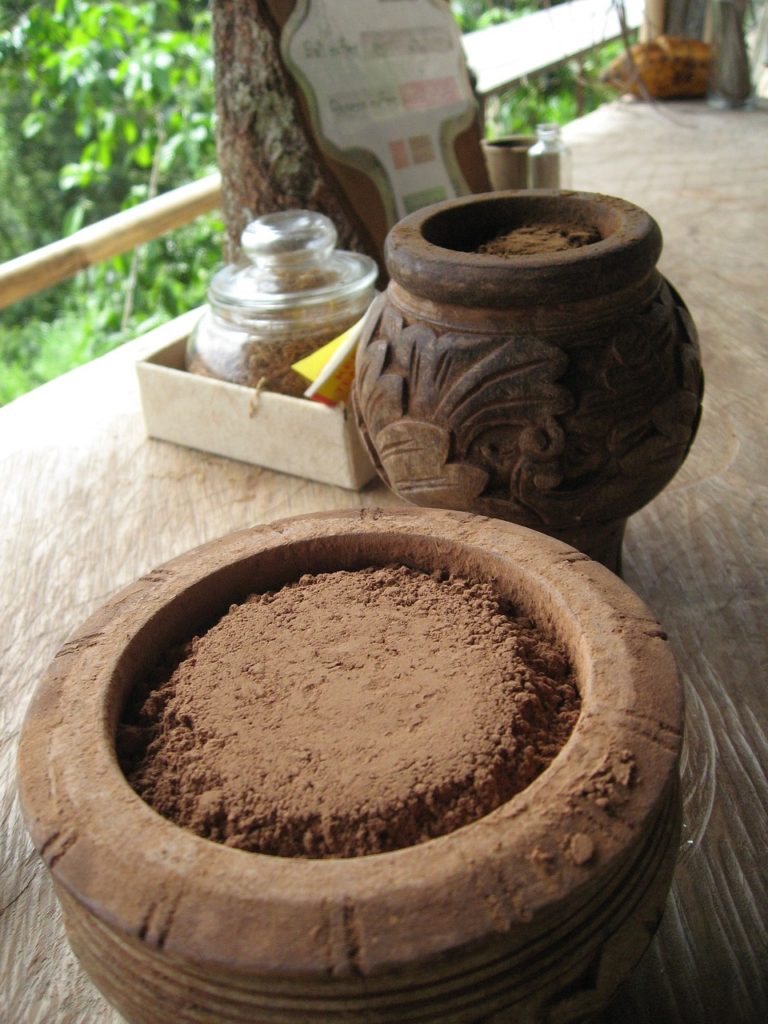In our fast-paced modern world, screens dominate our attention, and the daily grind can wear us down. But there exists a realm where time slows, hearts open, you can be more present in the moment, and ancient traditions are honored. Welcome to the world of ceremonial cacao! Is it a hobby, a ritual, or perhaps a fusion of both? In this exploration, we will delve into the history, the allure of this practice, its numerous benefits, how to get started, and what to consider when embracing ceremonial cacao as a transformative hobby.
The Origin Story of Ceremonial Cacao
To understand the essence of ceremonial cacao, one must journey back thousands of years to the heart of Mesoamerica. Here, the cacao tree, scientifically known as Theobroma cacao, found its roots. The Olmec civilization, one of the earliest Mesoamerican cultures, first discovered and cultivated this precious tree. “Theobroma” translates to “food of the gods,” a fitting name that mirrors the reverence and significance bestowed upon cacao by ancient cultures.
Maya Civilization: Nurturing the Cacao Tradition
The Maya civilization, which thrived between 2000 BCE and 1500 CE in present-day Mexico and Central America, played a pivotal role in shaping the ceremonial cacao we know today. To the Maya, cacao was more than sustenance; it was a divine gift from the gods, a source of wisdom and vitality.
Cacao became an integral part of Maya culture, serving as currency, a symbol of social status, and most importantly, a sacred tool used in rituals and ceremonies. Prepared as a beverage, cacao was believed to facilitate communication with the spirit world, promote fertility, and enhance spiritual insight.
The Aztecs and the Birth of “Chocolatl”
Following the Maya, the Aztecs further refined the use of cacao, giving birth to a potent elixir known as “chocolatl.” This frothy concoction was created by blending cacao with spices and chilies, reserved for nobility and warriors. Chocolatl was consumed during sacred ceremonies and as a rejuvenating tonic, adding to the legacy of ceremonial cacao.

Is Ceremonial Cacao a Hobby?
The question arises: Is ceremonial cacao a hobby? The answer lies in how one approaches it. For some, it is a leisurely pursuit, akin to exploring the world of fine wine or artisanal coffee. For others, it is a profound and transformative practice. Many just enjoy ceremonial cacao as they would a cup of coffee and the mindfulness it can bring. Let’s explore how to participate in ceremonial cacao, whether as a hobby, a meaningful ritual, or a combination of both.
As a Hobby: How to Get Started
For those curious about the world of ceremonial cacao as a hobby, here’s how to embark on this flavorful journey:
- Exploring Varieties: Begin your journey by sourcing high-quality ceremonial cacao. It’s fascinating to explore the diverse cacao varieties from different regions, each offering unique flavor profiles and characteristics. Try various options to develop your palate.
- Creative Exploration: Much like a hobbyist in the kitchen, experiment with different recipes to prepare your ceremonial cacao. Try making it hot or iced. Add spices like cayenne pepper, cinnamon, nutmeg, or even a touch of sweetness like honey or maple syrup to tailor the taste to your preference.
- Social Gatherings: Share your passion for ceremonial cacao with friends and loved ones. Hosting cacao ceremonies or gatherings can be a delightful way to connect with others and introduce them to the magic of cacao.
- Personal Rituals: Design personal rituals around your cacao consumption. Setting intentions before drinking, engaging in meditation, or journaling your experiences can deepen your connection to this practice.
- Learning and Education: Dive into the history and culture of cacao. Study the traditions of the Maya and the Aztecs, and explore the spiritual aspects associated with ceremonial cacao.
- Ethical Sourcing: Consider the ethical and sustainability aspects of your hobby. Choose cacao that supports fair wages and responsible farming practices in cacao-producing regions.
As a Meaningful Practice: The Allure of Ceremonial Cacao
For many, ceremonial cacao transcends the realm of a mere hobby; it is a profound and transformative practice. Here’s why you might want to embrace ceremonial cacao as a meaningful pursuit:
- Mindfulness and Meditation: Cacao contains anandamide, often referred to as the “bliss molecule.” Anandamide can create feelings of relaxation and reduce stress and anxiety. This could be why ceremonial cacao enhances mindfulness and meditation practices. It helps in grounding, focus, and achieving a state of relaxed awareness.
- Self-Exploration: Ceremonial cacao is a path of self-discovery. It offers a unique opportunity to delve into your emotions, past experiences, and inner landscape, often leading to profound personal insights.
- Spiritual Connection: In the realm of spirituality, ceremonial cacao is considered a valuable ally. It can help individuals connect with higher consciousness, spirit guides, or the divine. Many cacao ceremonies incorporate meditation, chanting, or shamanic practices to deepen this connection.
- Emotional Healing: For some, ceremonial cacao serves as a healing modality. It can aid in processing and releasing emotional traumas, allowing for emotional growth and greater emotional resilience.
- Heart-Opening: Ceremonial cacao is renowned for its ability to open the heart chakra, promoting feelings of love, connection, and empathy, both towards oneself and others.
- Enhanced Creativity: Some people find that ceremonial cacao enhances their creative abilities. It can stimulate the imagination and provide a unique perspective, making it a valuable tool for artists, writers, and creatives seeking inspiration.
Benefits of Ceremonial Cacao
In addition to the above reasons, let’s explore the many benefits of ceremonial cacao, including some specifically for your health:
- Physical Well-Being: Ceremonial cacao is a good source of essential minerals, including magnesium, iron, and potassium. Magnesium, in particular, is important for muscle and nerve function, bone health, and overall well-being.
- Enhanced Exercise Performance: Cacao contains nitric oxide, a compound known to dilate blood vessels and improve blood flow. This may enhance oxygen delivery to muscles, potentially improving exercise performance.
- Gut Health: The fiber content in cacao can support a healthy gut microbiome. A healthy gut is linked to various aspects of overall health, including digestion, immunity, and even mood regulation.
- Rich in Antioxidants: Cacao is packed with antioxidants, including flavonoids and polyphenols. These antioxidants in cacao may help protect the skin from UV damage and promote healthy skin aging. Some skincare products even use cacao extracts for their potential benefits. These compounds also combat free radicals, reducing oxidative stress and inflammation in the body, potentially lowering the risk of chronic diseases.
- Cardiovascular Health: Some studies suggest that the flavonoids in cacao may positively affect heart health. They may help lower blood pressure, improve blood vessel function, and reduce the risk of heart disease.
- Mood Enhancement: Cacao contains compounds like theobromine and phenylethylamine, which may have mood-lifting effects, promoting feelings of happiness and relaxation.
- Cognitive Function: Small amounts of caffeine and theobromine in cacao can provide a mild cognitive boost, enhancing focus, concentration, and alertness.
- Appetite Control: Cacao’s natural bitterness may help curb appetite and reduce cravings for sweet, high-calorie foods, which can be beneficial for weight management.
It’s important to emphasize that while ceremonial cacao offers these potential health benefits, it should be consumed in moderation as part of a balanced diet. Excessive consumption may lead to caffeine-related side effects like jitteriness or insomnia. Additionally, the health benefits are most pronounced when ceremonial cacao is consumed in its purest form, without additives like sugar or dairy.

Choosing the Right Ceremonial Cacao
When purchasing ceremonial cacao, it’s crucial to ensure you are acquiring a genuine and high-quality product. Consider the following factors:
- Source: Opt for cacao that comes from ethical and sustainable sources. Look for certifications such as Fair Trade or Organic, which ensure responsible farming practices.
- Minimally Processed: Choose cacao that is minimally processed and free from additives or preservatives. The less processed it is, the more potent its effects may be. Let me repeat, for the best experience, find cacao that is the least processed! From our experience, good ceremonial cacao is about $40 per pound unless you are buying it in bulk, and then you may find it closer to $30 per pound.
- Authenticity: Seek cacao from reputable suppliers who are transparent about the cacao’s origins and processing methods. Authentic ceremonial cacao should not be overly sweetened or mixed with artificial flavors.
- Ethical Sourcing: Ensure that the cacao you purchase supports fair wages and sustainable farming practices in the regions where it is cultivated.
Preparing Ceremonial Cacao: A Sacred Act
The preparation of ceremonial cacao is an integral part of the experience. To unlock its full potential, follow these steps:
- Choose Quality Cacao: Begin with high-quality ceremonial cacao, available as cacao paste or cacao beans. Minimally processed forms retain more of cacao’s natural properties.
- Measure the Dosage: The typical ceremonial cacao dosage ranges from 20 to 42 grams (0.7 to 1.5 ounces) per serving. Start with a lower dose if you are new to ceremonial cacao, gradually increasing it as you become familiar with its effects.
- Prepare the Beverage: Heat water to just below boiling, approximately 175-185°F (80-85°C). Place your measured cacao in a cup or bowl, then pour the hot water over it. Stir the mixture until the cacao is fully dissolved.
- Flavor Enhancements: To enhance the flavor, you can add spices like cinnamon, vanilla, or a touch of sweetener such as honey or maple syrup. These additions are optional and should align with your personal taste and intention for the ceremony.
- Set Your Intention: Before sipping your ceremonial cacao, take a moment to set your intention for the experience. This intention could be for healing, self-discovery, or simply to embrace the present moment fully.
Conclusion
Ceremonial cacao, once a sacred elixir of ancient civilizations, has found its way into the hearts and homes of contemporary seekers. Whether approached as a hobby, a meaningful practice, a healthful intention or a fusion of those reasons, ceremonial cacao offers an opportunity to connect with ancient traditions, explore the depths of one’s soul, and embrace a path of emotional healing, spiritual awakening, and overall well-being.
As you embark on your journey with ceremonial cacao, remember that it is more than just a beverage; it is a portal to the past, a bridge to the present, and a guide to the future. Approach it with intention, respect, and an open heart, allowing its magic to unfold and transform your life.





